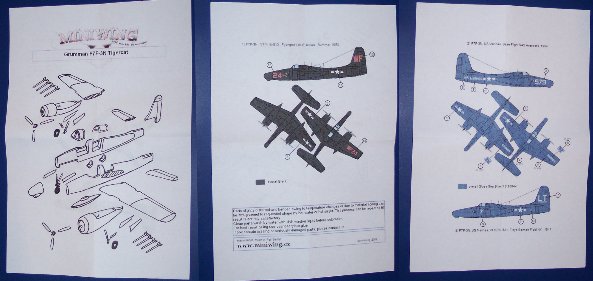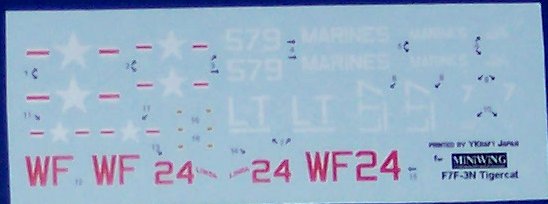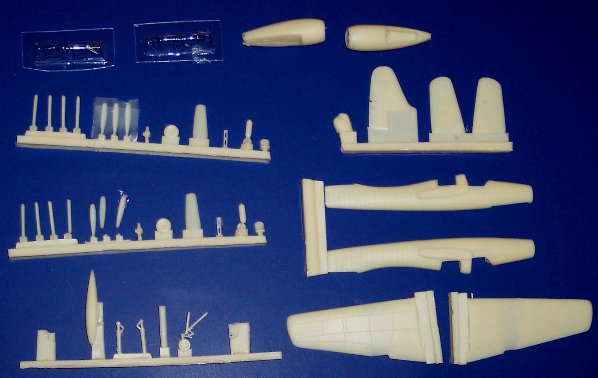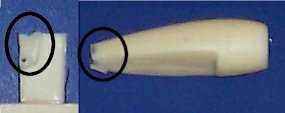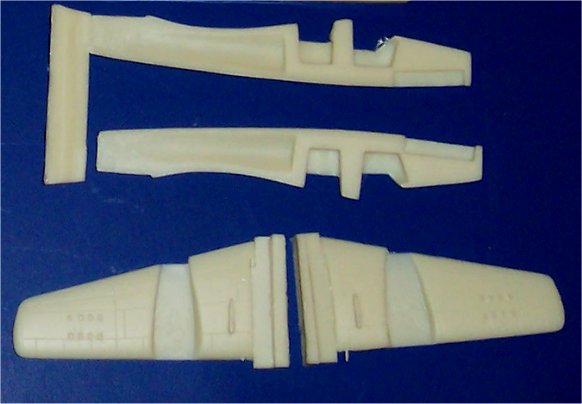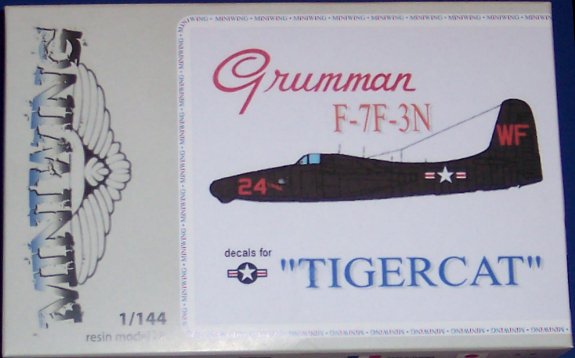
Miniwing 1/144 Grumman F7F-3N Tigercat
By Don Joy
Instructions
Instructions are a single page exploded drawing of the kit. These are accompanied by two multi-view color drawings showing the paint schemes (one overall flat black, one overall sea blue) and decal locations. There are no comments on the detail painting (interior, wheel wells, struts) so you will need to research that information. There are bombs in the kit and pylons inboard of the engines for them, but the instructions don’t show this.Decals
The small decal sheet looks well done with no visible “dots” as seen on some of Miniwing’s earlier sheets. There are two sets of wing markings, one set of fuselage markings, and detail markings for two aircraft. At first glance, the decals look too “light” – not the bright red or white you may be used to from larger scale decals. I don’t think this is a problem if the decals are thick enough to stand out against the monochrome paint schemes. They should provide the right amount of color “in scale” for a 1/44th kit. Unlike other Miniwing sheets, there are no decals for the instrument panels.The Kit
The kit consists of 42 cast resin pieces. A few pieces separated from their sprue in transit, but all parts are in a ziplock bag, so the small parts did not go anywhere. One bomb and one rocket broke free of their fins, but that should be a simple fix. One wing has what looks like a gun molded in near the wing root, but that piece is missing from the other one. As I recall, there are two guns in each wing root, so in either case a little work will be needed for total accuracy In my example, there is an air bubble at the trailing edge of the rudder which is easily fixed with Mr. Surfacer. Of more concern, the backs of the engine nacelles are not well formed and it looks like these are “bubble traps” in the molds. There are finished ends for the nacelles on the sprue with the landing gear struts (these are not shown on the instructions) but those also have large bubbles in them. If these are typical of the production run, plan to spend some extra time on the backs of the nacelles to correct this.Detail bits are similar to other Miniwing kits: gear doors have to be split; props come with separate blades; two sets of vacuformed canopies allow for a bit of ham-handness on the first try.
Conclusion
This is a nice kit and should only require a few hours to complete, even with the issues noted above. Anyone with basic skills should be able to fix the nacelles with a combination of putty, Krazy glue, a sanding tool, and maybe some thin sheet plastic. Unless you’re completely new to the hobby, I don’t consider those a major concern. All in all, I expect it to build up nicely and be a great addition to the small scale collection.
My thanks to Miniwing for the review kit.

